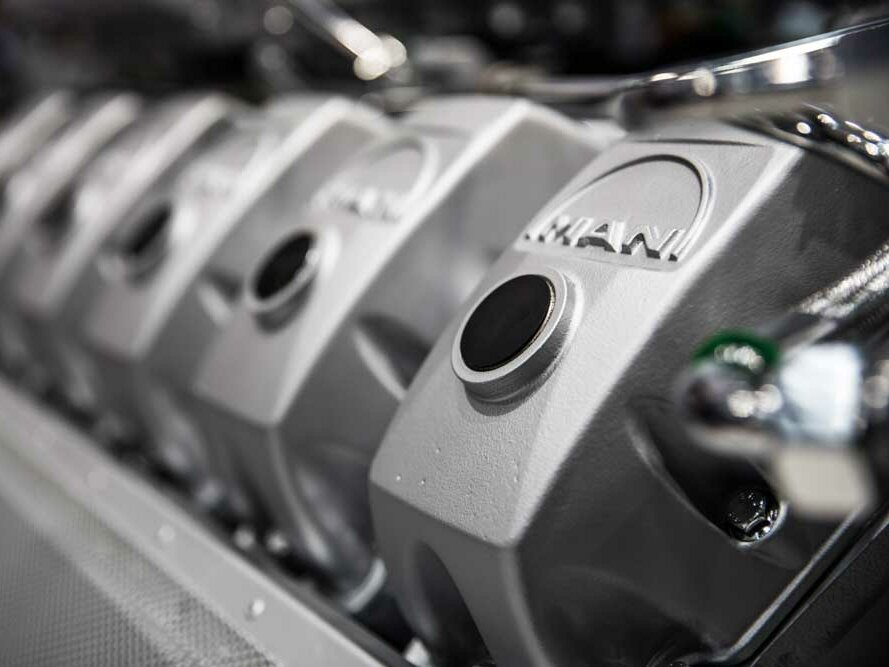Tractor model descriptions: No standardised information
By Niels Conradi, DLG Test Center Technology and Farm Inputs
The horsepower inferred in model designations is information decided by the manufacturer alone. There’s no standard involved, not even an obscure one. When it comes to power measurement, the wide range of formulae followed means that even if numbers are similar, comparison is only conditional. And where different manufacturers then insert information referring, in extreme cases, to maximum power with boost between the “more realistic” performance results in standard mode, the farmer can end up comparing apples with pears. In such cases the difference can be as high as around 20 %.
Standards for measuring tractor power
So if you want to compare performances, the first thing to do is to check the standard used in measuring output. In the past, tractor performance was given in DIN PS (HP) or DIN kW, i.e. according to the standard DIN 70020 which measured the maximum power that could be produced by the engine as recorded at the flywheel. Based on this, engines could probably be compared relatively well, although power losses through the transmission were completely disregarded. The number of performance measuring standards nowadays: SAE J1995, ISO TR 14396 (ECE R 120), 97/68 EG – 2000/25 EG, EWG 80/1269, ECE R24 or OECD Tractor Code 2, mainly differ through the auxiliary unit powered during tests. The OECD test is different again because here, power is measured at the pto instead of at the engine flywheel. Depending on test method, results may well vary within a DIN performance range of 25 % (+ 15 % to - 10 %) – with no way of converting correctly from one standard to another.

Photo: DLG
Objectively measuring tractor performance
Truly comparable are results from only two performance tests, both of which determine results from the complete tractor. Firstly, there are OECD Tractor Code 2 results measured at stationary operating points for pto and draught performance, although no static operation points are to be found under practical working conditions and the question still remains as to when the power boost is switched on. All this means that the second method, the DLG PowerMix, allows the most objective statement on tractor performance.
In the past, tractors achieved their highest performance at rated engine speed i.e. normally approx. 2,100 min-1. This rated speed was defined as the maximum power produced at the flywheel by a full equipped tractor at full throttle. Hereby, every farmer knew that power output dropped when engine load increased and rpm noticeably fell off. With modern engines, however, power production can be kept level, or even increased, when engine load causes the revs to drop. This gives the engine improved staying power through steeply rising torque production which is then often described in flowery phrases such as “constant power” or “extra power”. Produced in such cases, however, are two different types of power, rated power output at “full throttle” and, maximum power achieved at lower rpm e.g. 1,700 or 1,900 rpm-1.
Differences in boost function activation
Additionally, modern engines often feature a so-called “boost” function where the electronic fuel injection system increases engine power when certain conditions in the transmission are fulfilled. The driving power itself is set for maximum possible torque within standard performance. In other words, the electronics produce a boost in power, e.g. with higher rpm and reduced torque requirement, as can be the case in transport at higher driving speeds. A further example for availability of boost power is when, in addition to vehicle drive requirement, power is also needed for auxiliary drives such as the pto, in mowing or power harrowing operations for example. Within the scope of every DLG PowerMix test, we measure beforehand with a highly precise and accredited recording technique the actual pto performance of the tractor according to OECD Tractor Code 2. For a long time now, it has remained our fundamental aim to only rely on performance figures through recordings carried out by ourselves. Contrary to a “quick and dirty” measurement on a mobile pto brake, our tests are valued for high reliability and reproducibility. We also make accessible these measurement results to every farmer within the scope of our DLG PowerMix Data Sheets.
Summary
Based on the type designation of a tractor to judge its real performance is nowadays akin to a lotto draw with a high probability of pulling the wrong number out of the pot. For information upon which to base tractor purchase, the standard performance should always be focussed on and used in comparisons. The boost performance result is always only to be regarded as additional information. In this case, one can look enviously over to the USA where, next to the engine power output in the brochure is listed the pto power output, and has been for a considerable time now. For this reason, we recommend when buying a new tractor to ensure you have comparable performance measurement figures for the complete vehicle. These are for pto or draught power according to OECD Tractor Code 2 or – for actual performance in real working conditions – the DLG PowerMix results. Only these offer an objective comparison basis and can, if required, also be verified by a neutral facility at an acceptable cost.


